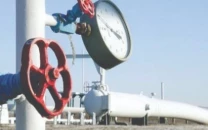So close yet so far
Absence of an intra-regional dispute settlement mechanism has limited Saarc's capacity to contribute to regional peace


If anything, this episode made one thing clear. The future of Saarc as a regional cooperation organisation remains hostage to the troubled India-Pakistan relationship. Both share the responsibility for providing the needed ‘enabling environment’ of peace and stability free of mistrust and hostility without which no regional cooperative endeavour anywhere in the world has worked. With India-Pakistan peace as elusive as ever, there is no prospect of an early breakthrough towards any meaningful regional cooperation, much less the ambitious plans for economic integration in this vast region.
It is nearly three decades since Saarc came into being as an expression of South Asia’s collective resolve to develop a regional cooperative framework for the socio-economic well-being of the peoples of its member-states. This promise remains unfulfilled. Saarc has neither improved the quality of life in the region, nor accelerated economic growth, social progress and cultural development of its member-states. In fact, economic growth indices, with rare exceptions, are static, if not going downwards. No wonder, South Asia remains one of poorest regions in the world with the vast majority of its people still living in grinding poverty and sub-human conditions.
Five of the eight Saarc member states — Afghanistan, Bangladesh, Bhutan, the Maldives and Nepal — belong to the UN’s category of Least Developed Countries or LDCs. With its unbroken legacy of poverty, hunger, disease, illiteracy and conflict, Saarc, as a regional cooperation organisation, has not gone beyond declaratory pronouncements with no tangible achievement to its credit. We just had yet another high-sounding but low-yield 36-point declaration adopted at the Kathmandu summit, which was no more than a rehash of the same old familiar summitry reaffirmations and reiterations that never had any practical value for the peoples of this region.
There is something fundamentally wrong that keeps this region from developing a genuine regional impulse. We have been hearing the same rhetoric at every Saarc summit from our leaders “reaffirming” their commitment to the principles and objectives outlined in the Saarc Charter. These pronouncements are a reflection of the only ‘consensus’ that we seem to have developed at the regional level, acknowledging the grim reality that Saarc, during the last three decades of its existence has just not lived up to its promise and potential. Prime Minister Modi, in his debut speech at the Kathmandu summit, could not have been more candid in depicting the region’s dilemma.
“When we speak of Saarc, we usually hear two reactions — cynicism and scepticism. This, sadly, is in a region throbbing with the optimism of our youth. Let us work to change cynicism into optimism,” he said, adding “as Saarc, we have failed to move with the speed that our people expect and want. Nowhere in the world are collective efforts more urgent than in South Asia; and, nowhere else is it so modest.” What he rightly meant was that South Asia is out-of-step with other regions of the world, which have been able to transcend their differences and disputes, moving on a steady course to economic growth and regional integration.
Speaking from a prepared text in English, Prime Minister Modi suddenly broke into Hindi: “Hum paas paas hain par saath saath nahin. Saath saath honey se taqat kai guna barh jaati hai” (We are neighbours but we are not together. By staying together, our strength can increase manifold).” He admitted: “India, too, has its share of responsibility because of its size and location. I know India has to lead, and we will do our part. I hope each of you will, too.” He then reiterated what his predecessor Manmohan Singh, too, had suggested — the need for improved connectivity in the region. Surely, ‘connectivity’ — physical, economic and of the mind will enable the region to come together and fully tap its potential.
If Prime Minister Modi is a man of vision, he would know what really is wrong with Saarc. It is not just poverty and backwardness in the region. It is South Asia’s geopolitical peculiarity in which all Saarc countries share a border with the largest state of the region, India, but not with one another. This unique geographic feature limits the scope of cooperation to a great degree. It makes transit trade difficult, since there remains no room for bypassing Indian borders, granting India a virtual control over all proposals for intra-regional cooperation.
India, because of its sheer size and centrality, stands more or less alone as an exclusive ‘power’ without having to be identified in tandem with the rest of the countries in the region, some of which, like Bangladesh and Pakistan in terms of population, are not that small in the global rankings. India’s geographical centrality also gives rise to a host of border conflicts and water disputes in the region all of which involve India. In essence, it is these bilateral disputes that have kept Saarc from delivering on its promise and potential.
While other regional organisations around the world, including the European Union and Asean, have moved ahead in political harmony, Saarc remains fraught with centrifugal tendencies and mutual mistrust from the very beginning. Absence of an intra-regional dispute settlement mechanism has severely limited its capacity to contribute to regional peace, security and development without which there can be no meaningful progress in socio-economic and cultural cooperation in the region.
For an enabling environment, South Asia must free itself of tensions, conflicts and escalating military budgets for which the onus rests solely with India. Durable peace is sine qua non for South Asia’s stalemated process of regional cooperation. Also, the ‘connectivity’ that India now seeks through Pakistan into Central Asia and Europe depends on its ability to settle its disputes with Pakistan, including the Kashmir issue.
It is time South Asia, so rich in history, culture, and material and human resources, rediscovered its lost strength and indivisible identity to build dividends of peace and prosperity rooted in common interests to be able to play a balancing role on regional and global levels. But are we sure about India?
Published in The Express Tribune, December 6th, 2014.
Like Opinion & Editorial on Facebook, follow @ETOpEd on Twitter to receive all updates on all our daily pieces.














COMMENTS
Comments are moderated and generally will be posted if they are on-topic and not abusive.
For more information, please see our Comments FAQ